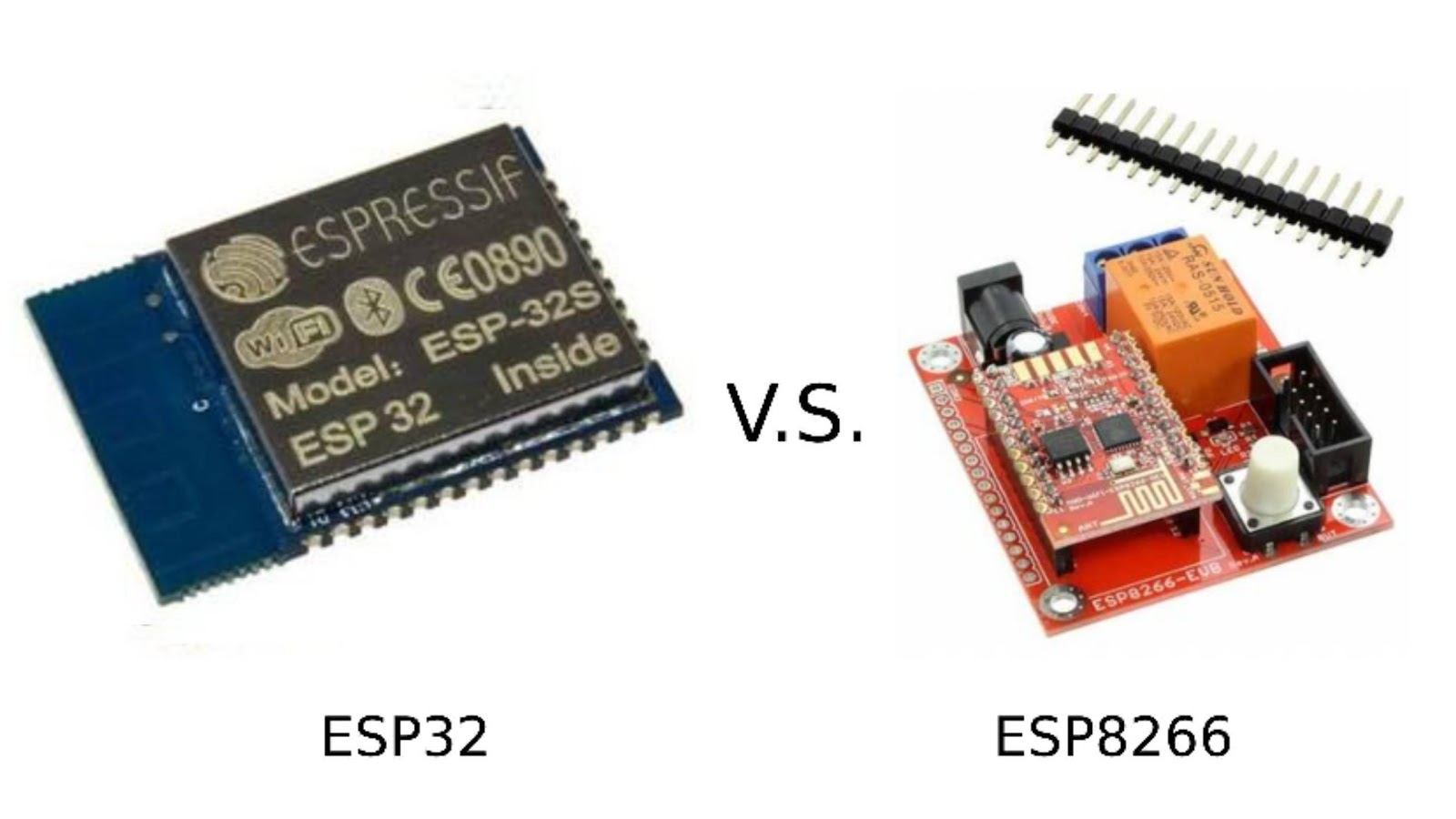ESP32 vs ESP8266

What is Esp32?
A flexible Wi-Fi+BT+BLE MCU module, the ESP32 can be used for a variety of tasks, from low-power sensor networks to the most demanding ones like voice encoding, music streaming, and MP3 decoding. It includes a power amplifier, low-noise amplifiers, filters, and a power management module in addition to an integrated antenna and RF balun. On the printed circuit board, the total solution takes up the least amount of room. The TSMC 40nm low power 2.4 GHz dual-mode Wi-Fi and Bluetooth chips utilized in this board provide the best power and RF characteristics are secure, dependable, and adaptable to a wide range of applications.
What is Esp8266?
The ESP8266 is a system on a chip that combines a WiFi module with an IP/TCP protocol stack (SOC). The ESP8266 gives you access to any microcontroller via your WiFi connection. The ESP8266's ability to host an application or offload all WiFi networking tasks is one of its most crucial characteristics. Even under the most demanding industrial situations, it can function dependably because of its exceptional sturdiness. The L106 is a bespoke 32-bit processor with 32KB of instruction space, 80KB of user data, 16 GPIO ports, and a number of on-board peripherals, such as an analog-to-digital converter, a universal asynchronous receiver-transmitter (UART), and the inter-integrated circuit protocol (I2C) (ADC).
Differences Between Esp32 and Esp8266
Take a look at how the two components are different. The ESP8266 can be directly programmed using the Arduino IDE, however, it is typically more challenging than the ESP32. Larger projects may be developed on a single SoC using the ESP32's faster CPU and more memory, and the device is more secure thanks to the ESP32's advanced security capabilities. In spite of the fact that its firmware and associated peripherals occasionally exhibit flaws, the ESP32 is a reliable board. As memory and processing capacity rise, Secure Sockets Layer (SSL) connections become more and more practicable. These are essential requirements in a society where security is paramount. In general, ESP32 devices are more useful in sophisticated applications because they have more GPIO to work with. The fact that many ESP32 development boards have tiny cameras gives the ESP32 the impression of being a very powerful gadget. The ESP8266 works better in situations where a microcontroller is necessary for retrofitting an older system and an Internet connection is necessary for modernization.
Which One to Choose: Esp32 or Esp8266
Because ESP32 contains additional functionality such as a CPU core, faster Wi-Fi, Bluetooth 4.0 (BLE), touch sensitivity pins, built-in Hall Effect sensors, and temperature sensors, it is superior to ESP8266. GPIO pins are more plentiful on the ESP32 than on the ESP8266. Ten capacitive GPROS, which can be used to trigger events, are built into the ESP32. They can detect touch. The trigger event is a circuit in which an input pulse, such as in a radar module, causes a reaction.
An affordable substitute for the ESP32 is the ESP8266. Although it is missing a few functions, it is adequate for the vast majority of straightforward DIY IoT applications. The GPIO mapping, however, has significant restrictions, and there might not be enough pins to accomplish your goals. An ESP32 is the best choice in that situation. So Select ESP32 or ESP8266. Depending on what you want to accomplish.






